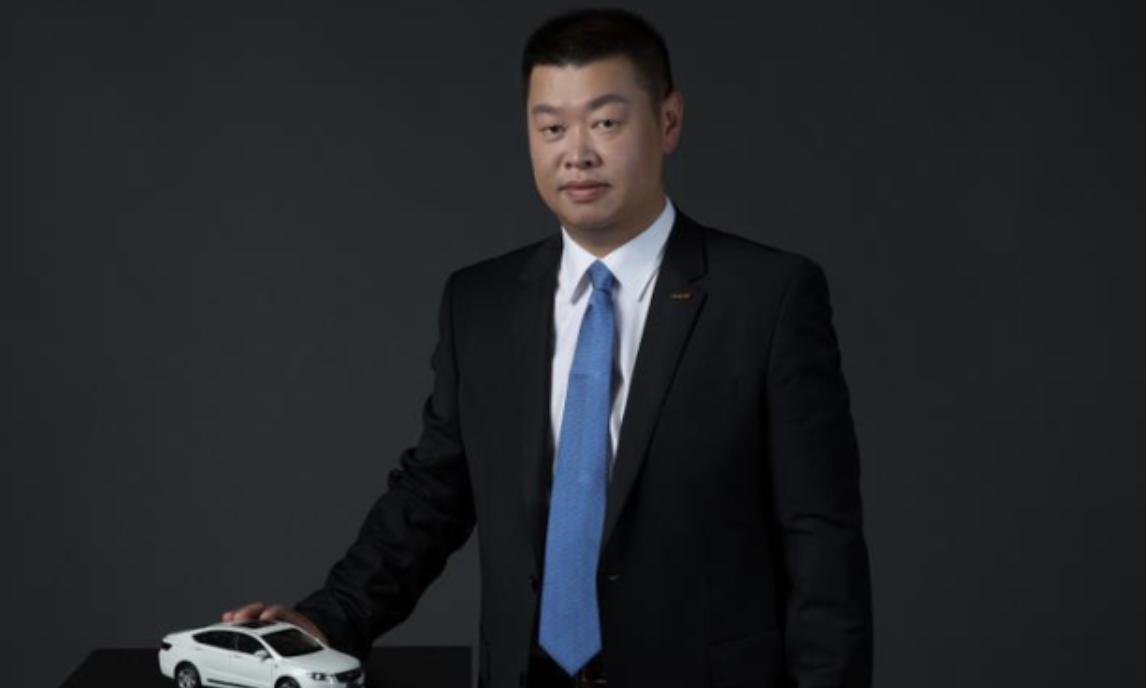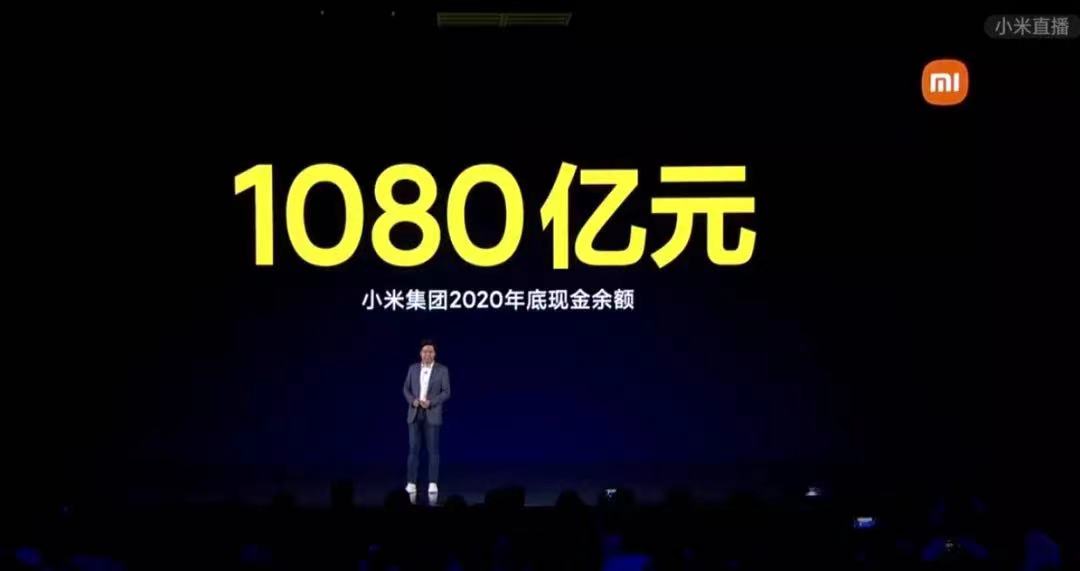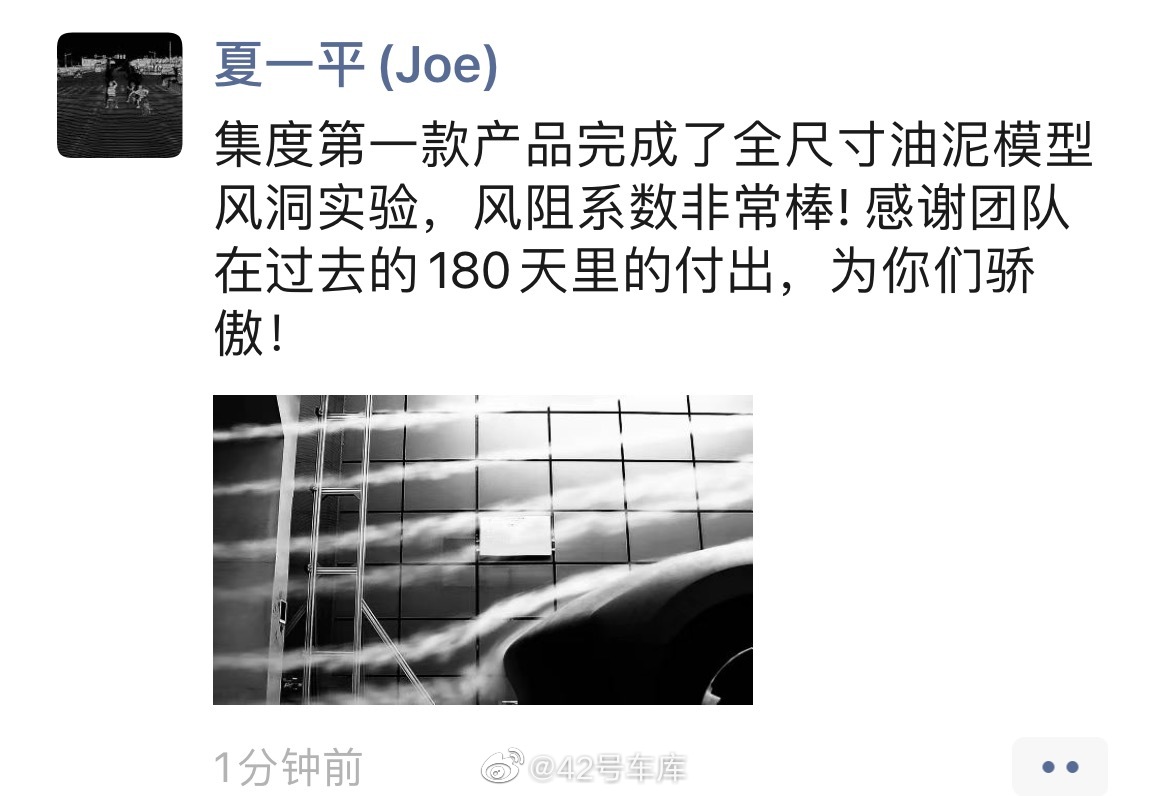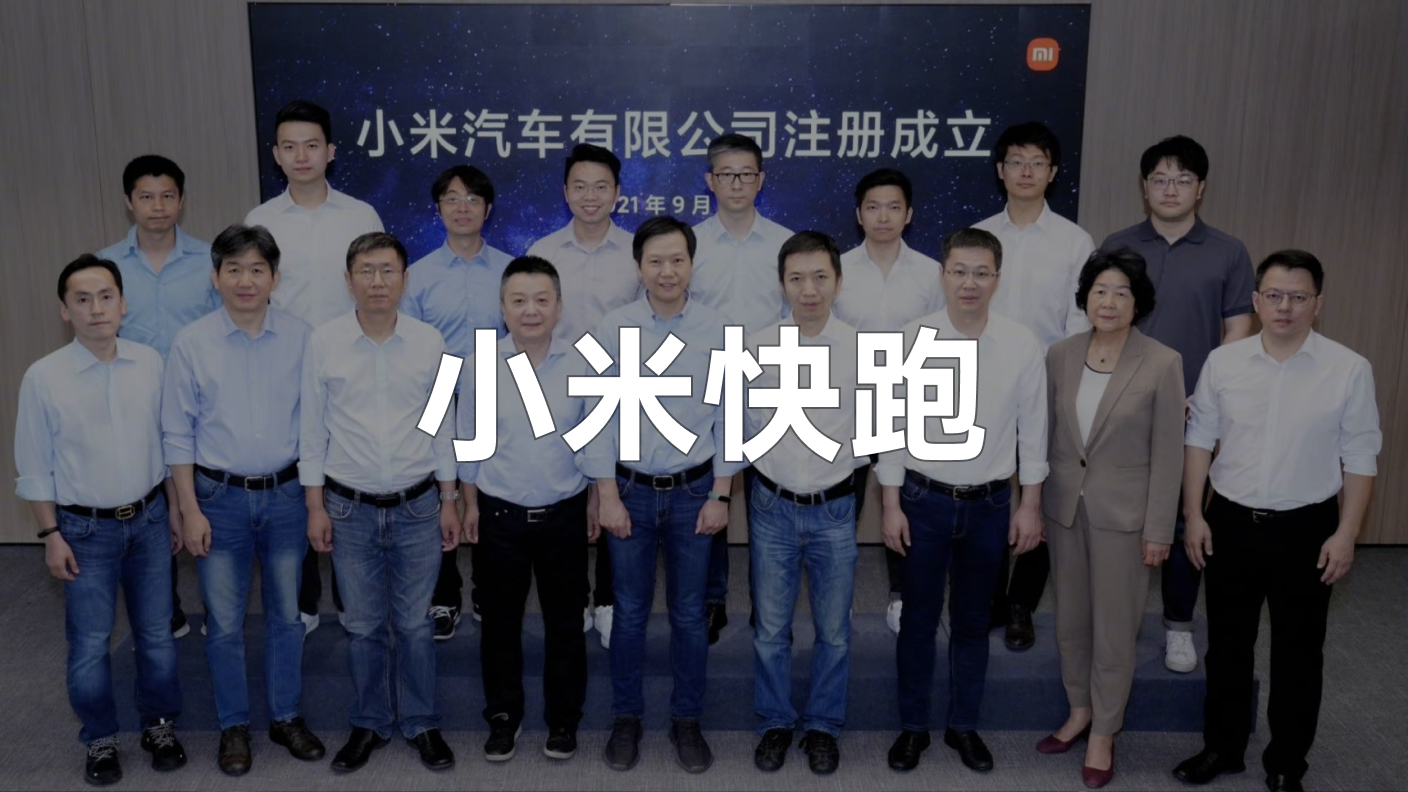It has been 167 days since Xiaomi announced its entry into the car manufacturing industry.
During these past 100+ days, Lei Jun was as busy as a “spinning top”. He visited various established automakers and suppliers, such as BYD, Great Wall Motors, and SAIC, and then personally “recruited troops and bought horses” on Weibo to quickly build a team.
Finally, on September 1st, Xiaomi Automotive Co., Ltd. was successfully registered with a registered capital of 10 billion RMB and Lei Jun serving as the legal representative. Shortly after, Lei Jun posted a group photo of Xiaomi Automotive’s top management on Weibo with the caption, “Xiaomi Automotive’s new classmates are starting school today.” Among the group of leaders standing next to him, although only one has a background in the automotive industry, all of the others are veterans in the technology and internet industries.
Let’s take a look back at what Xiaomi has done in the 100+ days since it announced its entry into the car manufacturing industry. Everyone says that Xiaomi Automotive’s “first battle is its decisive battle.” Do they have enough time left?
What has Xiaomi Automotive done in these 100+ days?
At the press conference on March 30th, Lei Jun emotionally stated that Xiaomi Automotive is his last major entrepreneurial project in his career, and he will risk all his reputation to fight for it. And his subsequent actions indeed align with his words, being personally involved in all aspects, and visiting nearly every domestic automaker. At this time, the public speculated that Lei Jun was looking for outsourced factories for Xiaomi Automotive. However, judging from current developments, Xiaomi Automotive seems to not want to follow NIO’s outsourced model.
In August, it was rumored that Xiaomi Automotive would settle in Beijing, and related automotive domain names had been successfully registered. Xiaomi Automotive’s every move and Lei Jun’s visits attract the attention of the entire industry. However, these developments do not have a substantial impact on the actual “car-making” process. The two events that truly excited the public occurred in late August and early September: Xiaomi Automotive’s acquisition of Deepmotion and the chairman of Geely Automobile Research Institute joining Shunwei Capital.
Before officially starting car production, Xiaomi’s involvement in the intelligent automotive field was not extensive, as reflected in their number of patents for invention. Compared to China’s BATH (Baidu, Alibaba, Tencent, and Huawei) giants, Xiaomi lags far behind both in its level of investment and in the number of products that have been launched. It can be said that, before officially starting research on car manufacturing, Xiaomi’s preexisting thoughts on the automotive industry were limited. If one must link Xiaomi to car manufacturing, then Lei Jun’s investment in NIO’s Series A financing as the leader of Shunwei Capital would be one such link.Acquiring Deepmotion can be seen as Xiaomi’s remedy for the lack of investment in the smart driving industry. For Xiaomi, it is too late to seek temporary solutions. Since they are not short of money, buying companies is the quickest way to strengthen themselves. It is worth mentioning that the CEO Cai Rui, CTO Li Zhiwei, and chief scientist Yang Kuiyuan of Deepmotion all come from Microsoft Asia Research Institute with Xiaomi’s President Lin Bin being their colleague for many years.
After the transaction is completed, about 20 core members of Deepmotion will join Xiaomi, becoming a core force of Xiaomi’s autonomous driving team.

In addition, there have been rumors since early summer this year that Hu Zhengnan, the head of Geely Automotive Research Institute, will join Xiaomi’s automotive division, but he personally denied it. After two months of speculation, Hu Zhengnan suddenly announced on his friend circle that he officially joined Shunwei Capital and will focus on the intelligent automotive ecology in the future. The reason why he joined Shunwei Capital instead of Xiaomi’s automotive division may be related to non-compete agreements.
As the head of Geely Automotive Research Institute, Hu Zhengnan has led the development of multiple models. The BMA, CMA, and the SEA Haohan architecture, which gave birth to the Extreme Kraken 001, were all developed under his leadership. His joining is expected to make the ultimate form of Xiaomi’s first automotive product more exciting.
The Attraction of Xiaomi: 20,000 Resumes Received
During the Q2 earnings call, Xiaomi’s President Lin Bin revealed that since Xiaomi’s automotive division began recruiting, they have received over 20,000 resumes and selected only 300 people to join the team.
From this sentence, we can gather two pieces of information. First, Xiaomi’s automotive division is very attractive, with 20,000 resumes keeping their HR team busy for weeks. Second, Xiaomi is very picky; only 300 of the 20,000 candidates received job offers. Although Xiaomi’s automotive division is still in its early stages, they are not desperate for quick fixes.
Hu Zhengnan’s joining and the 20,000 resumes received are enough to illustrate Xiaomi’s attraction. Generally, companies can attract excellent talents for two reasons: ambitious goals and generous compensation. Xiaomi has both. Xiaomi’s automotive division has set a small goal for themselves: to launch their first model in the first half of 2024 and sell 900,000 vehicles within three years. Although this goal may seem like an empty promise, it is an ambitious goal, and taking action to achieve it is real. From Lin Bin personally investigating various cities to buying companies and poaching talent from Geely, these series of movements fully demonstrate Xiaomi’s determination.
As for the question that concerns workers the most, we can understand it by reviewing that press conference. Simply put, Xiaomi has a lot of money. Xiaomi’s first investment in its car division is 10 billion yuan, and it plans to continue investing 10 billion U.S. dollars in the next decade. At the end of last year, Xiaomi Group’s account still had 108 billion yuan in reserve. Although car manufacturing is an extremely costly industry, many new players have encountered financial difficulties, and even existences like Byton have spent money without any effect. However, not only does Xiaomi have a lot of money in its account, but its other businesses are also profitable. According to insiders, Xiaomi’s compensation for senior talents in its car division is generally higher than that of peers.
In addition, another major factor that determines the fate of a company is the personal charm of the CEO. Apple’s Steve Jobs, Tesla’s Elon Musk, and Nio’s Li Bin are all charismatic business leaders and have many loyal fans. Lei Jun is also such a character. He earned his first large salary in college, but even as a successful entrepreneur at the age of 40, he felt that his company wasn’t great enough, and he felt “empty” personally. So he started again, founded Xiaomi, and became one of the top three global companies. When Xiaomi was hesitating at the beginning of the year whether to enter the car industry, the slogan of “If Xiaomi dares to make cars, I dare to buy them” from Xiaomi fans gave Xiaomi more confidence.
Does Xiaomi have enough time for its car division?
After reading the above information, you may feel that Xiaomi’s prospects in the car industry are quite promising. Indeed, they have determination and conditions that are enviable. But do they have enough time?
We can compare them with Jetta, which was established at around the same time.

Jetta was officially registered on March 2, following Xiaomi’s footsteps. But last month, CEO Xia Yiping announced on his social media account that Jetta’s first model had completed full-size clay model wind tunnel experiments, which was accomplished in just 180 days since the company’s founding.
In contrast, Xiaomi’s progress seems to be very slow. But the two are fundamentally different. Jetta is not led by Li Yanhong personally, but by Xia Yiping, the former CTO of Mobike. Jetta is also a product of cooperation between Baidu and Geely, and Jetta’s first model also comes from the SEA platform. Therefore, Jetta is more like a professional manager-led team, which adopts a fast-paced and market-oriented approach.And as the last major entrepreneurial project of Lei Jun, Xiaomi’s electric car venture, he clearly prefers to take his time and do things thoroughly. Not only must the industry talents be carefully selected, but also unlike competing companies, Xiaomi does not adopt the cooperative model of using mature platform architecture to build cars.
Moreover, pure electric cars are an incremental market in the next few years. Although the pattern is gradually becoming clear now, it will take some time before the market fully takes shape. As long as Xiaomi’s first product has strong product strength and a price that can impress consumers, it is not impossible to “harvest” another wave of users in 2024.
A good meal is not afraid of being late, perhaps this is Lei Jun’s thinking.
Conclusion

It took Xiaomi 11 years from its establishment to becoming one of the top three in the world.
After achieving very impressive results, people’s fighting spirit and passion often gradually decline. But Lei Jun once again began from scratch and entered an industry that was completely unfamiliar and extremely competitive, requiring tremendous courage and determination.
When I looked back at the Xiaomi press conference on March 30th, I suddenly noticed that Lei Jun choked up several times. At this moment, I thought of the famous CCTV sports commentator’s words when reviewing Henry’s career. I realized that this sentimental copy is also applicable to Lei Jun.
52-year-old Lei Jun stood there, looking deeply with his eyes, full of shadows of his youth.
This article is a translation by ChatGPT of a Chinese report from 42HOW. If you have any questions about it, please email bd@42how.com.
